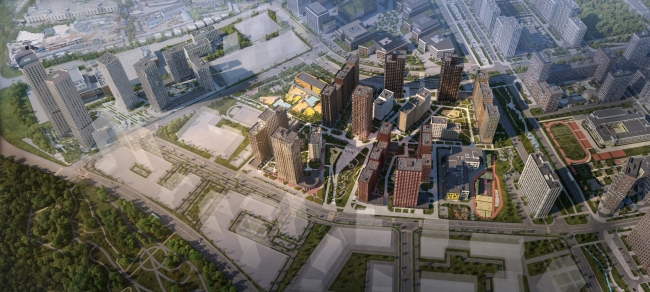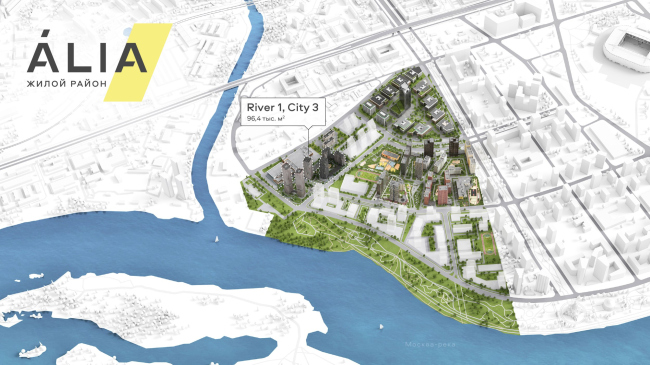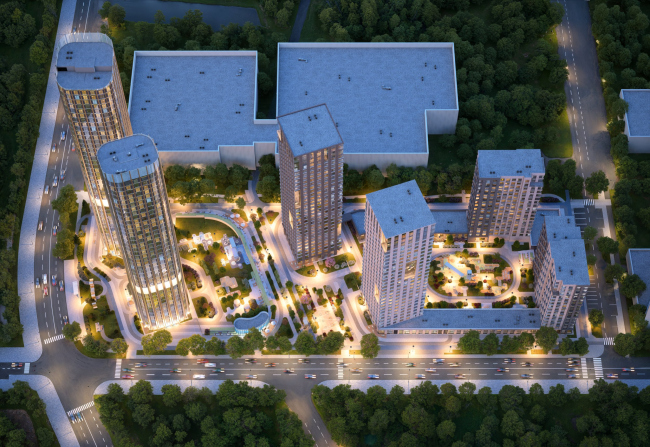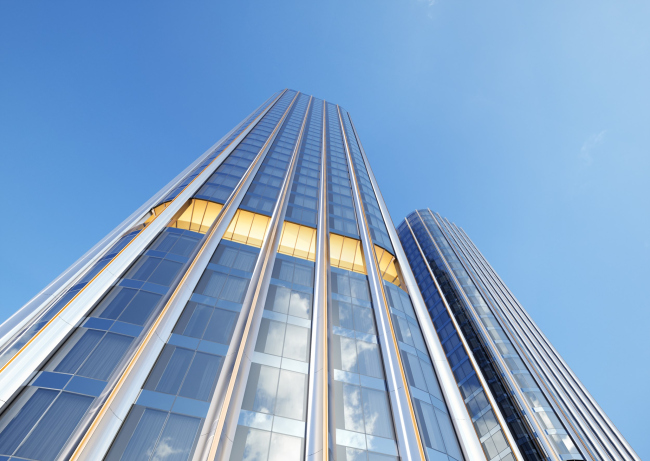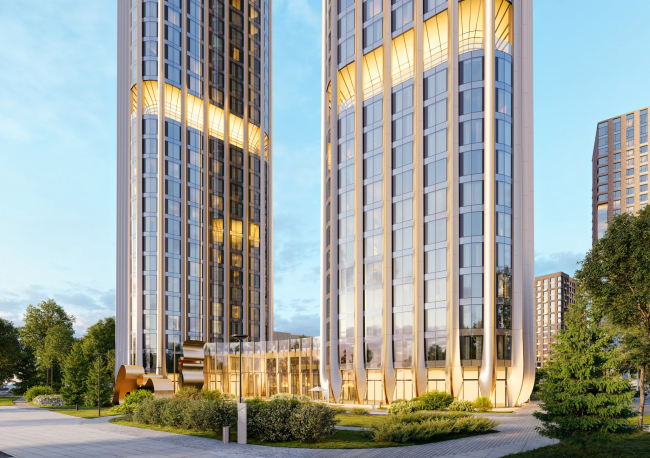|
Published on Archi.ru (https://archi.ru) |
|
| 22.08.2024 | |
|
Proportional Growth |
|
|
Julia Tarabarina |
|
| Studio: | |
| APEX Project Bureau | |
|
The project for the fourth phase of the ÁLIA residential area has been announced. The buildings are situated on an elongated plot – almost a “ray” that shoots out from the center of the area towards the river. Their layout reflects both a response to Moscow’s architectural preferences over the past 15 years, shifting “from blocks to towers”, and an interpretation of the neighboring business park designed by SOM. Additionally, the best apartments here are not located at the very top but closer to the middle, forming a glowing “waistline”. The process of creating new urban fabric on the former Tushino airfield – like watching fire, water, or a working person – can hold your attention for quite a while. ALIA residential areaCopyright: © APEX / ASTERUSThe main “hub” for employment is the Rostec City business park, realized based on a project by SOM; they also developed the master plan for the entire area. One of the notable sports facilities is the Chkalov Arena, designed by the architectural company “Meerson and Voronova”. What is also important is the fact that housing complexes are still being built here: Phases I and II have been completed, and Phase III is underway. The residential blocks vary in height and combine brick with silver and gold metal, which, thanks to the textured slopes, creates truly beautiful sun reflections. 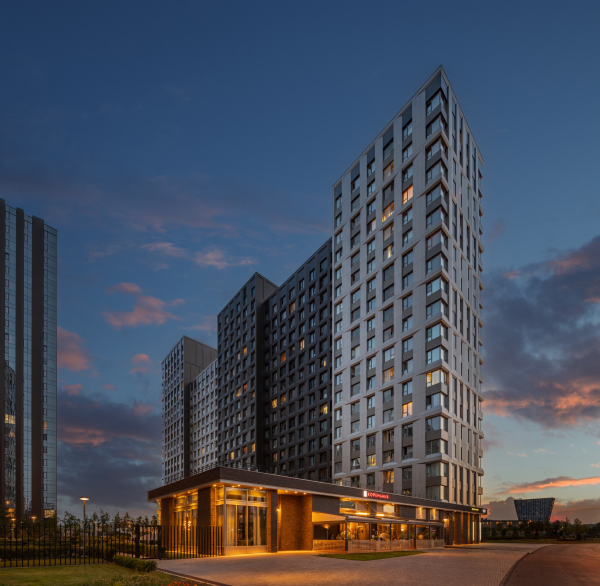 Phase 4 of ALIA residential area. Houses completed before 2024Copyright: Photograph © Vadim Shcherbakov / provided by Asterus Phase 4 of ALIA residential area. Houses completed before 2024Copyright: Photograph © Vadim Shcherbakov / provided by Asterus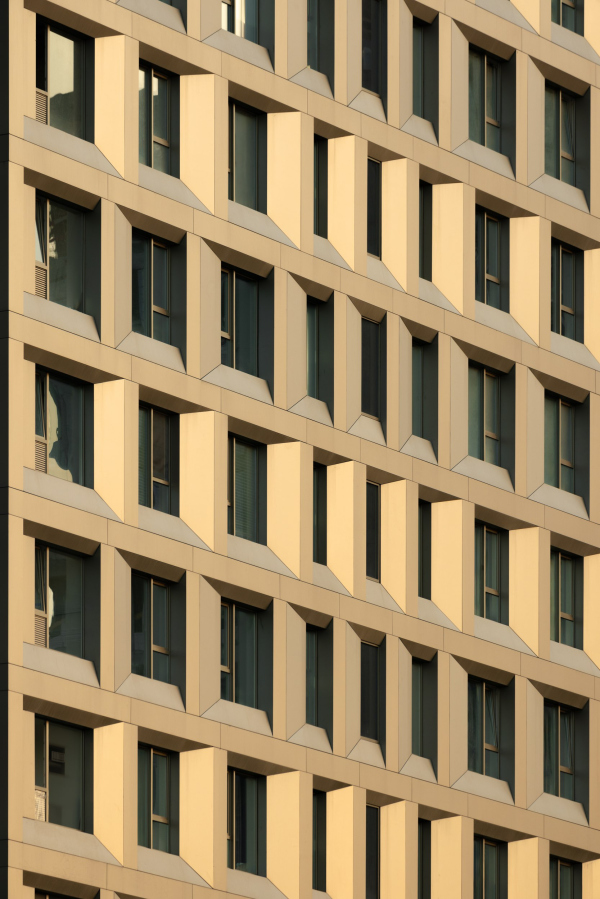 Phase 4 of ALIA residential area. Houses completed before 2024Copyright: Photograph © Vadim Shcherbakov / provided by Asterus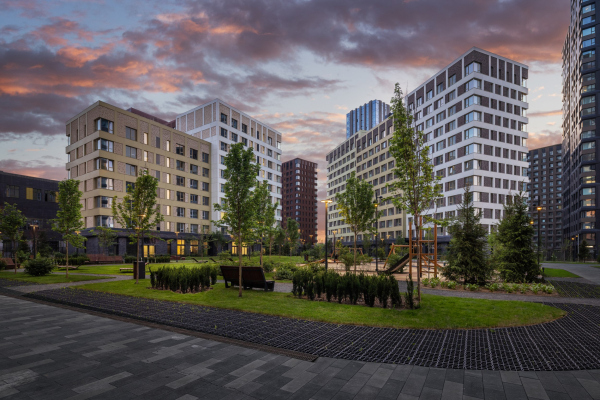 Phase 4 of ALIA residential area. Houses completed before 2024Copyright: Photograph © Vadim Shcherbakov / provided by Asterus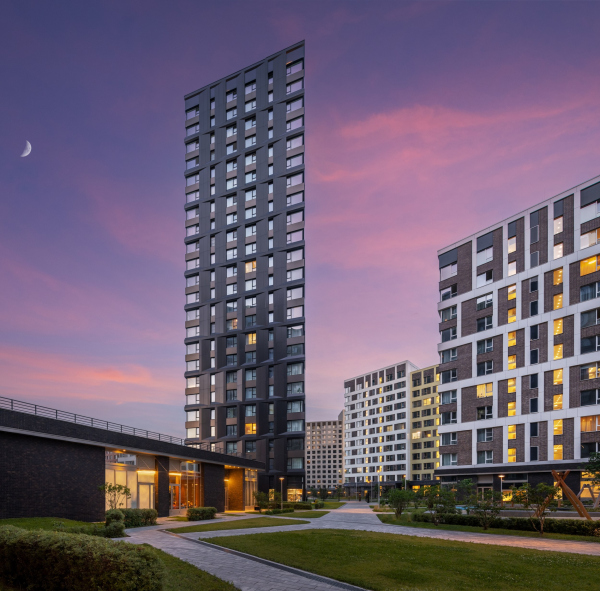 Phase 4 of ALIA residential area. Houses completed before 2024Copyright: Photograph © Vadim Shcherbakov / provided by Asterus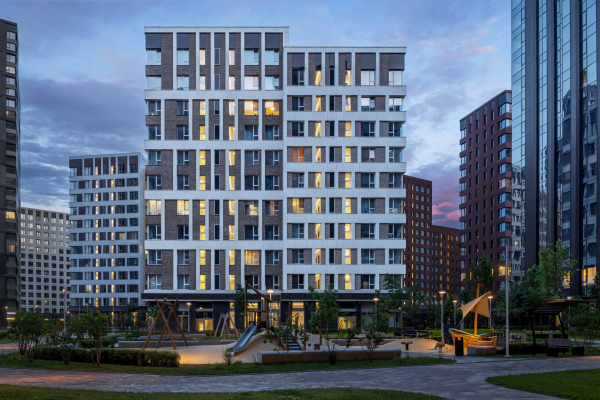 Phase 4 of ALIA residential area. Houses completed before 2024Copyright: Photograph © Vadim Shcherbakov / provided by Asterus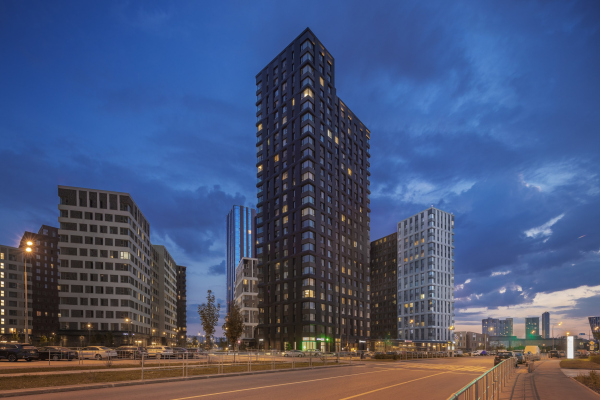 Phase 4 of ALIA residential area. Houses completed before 2024Copyright: Photograph © Vadim Shcherbakov / provided by Asterus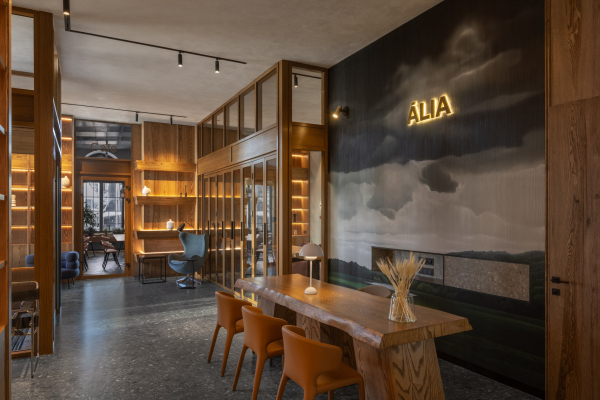 Phase 4 of ALIA residential area. Houses completed before 2024Copyright: Photograph © Vadim Shcherbakov / provided by Asterus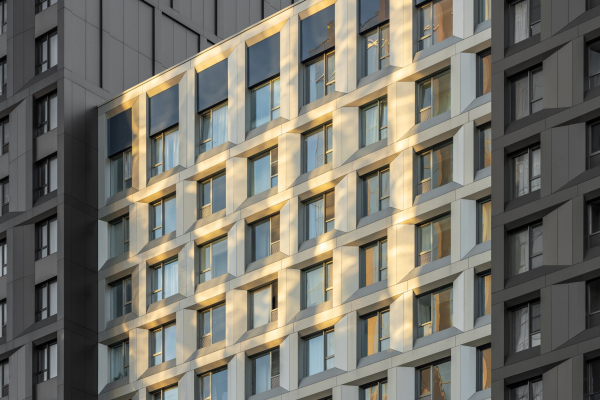 Phase 4 of ALIA residential area. Houses completed before 2024Copyright: Photograph © Vadim Shcherbakov / provided by AsterusThis summer, Moskomarkhitektura approved the project for the fourth phase of ÁLIA. The authors of this project are APEX architects; they have previously worked on the ÁLIA district, specifically adapting SOM’s concept for the business park. Phase 4 of ALIA residential area. Location planCopyright: © APEX / ASTERUSHowever, the new city block project is their original work, starting from the concept stage. The project was led by Elena Strugovets. 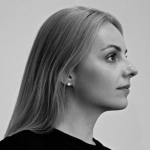 , APEX Project Bureau The idea of seeking harmony between humans and nature is not new, but it is a topic that always has something new to offer. The concept of the ÁLIA residential complex is a testament to this. Imagine a lakeshore covered with water lilies, imagine this flower – both strong and fragile, dense and delicate. The architectural solution for the facades is inspired by this image. The shades of brick transition from warm to deep grays, creating a harmonious blend with the natural surroundings. The use of materials with different textures, such as anodized metal, glass, concrete tiles mimicking brick, and fiber-reinforced concrete, allows for a greater diversity in facade and design solutions. The warm color palette will help residents feel cozy amidst the pace of life in the megalopolis. The site for the fourth phase is located south of Chkalov Arena, stretching parallel to its southern façade – it extends from the business park towards the river and the embankment. The proportions are elongated, with an aspect ratio of approximately 0.27. Such sites are considered challenging; they require careful thought and innovative ideas. In this case, the concept is as follows: the architects turned the elongated site into an “sweep drawing” placing different types of buildings sequentially, step by step, along it – from brick blocks to glass-aluminum towers with everything else in between. They seem to have reflected the history of Moscow’s shifting architectural preferences within a single project. Closer to the center of the area, there are relatively low, 14-story buildings, forming a city block frame. Their facades vary in shades of brick ranging from beige to brown. Then, approximately in the middle, two brick towers appear: one adjoins the northern crossbeam of the block, and the other, southern one, stands separately. Phase 4 of ALIA residential area. Houses completed before 2024Copyright: © APEX / ASTERUSClosest to the water are two towers up to 144 meters high. The result is three stages with a gradual increase in height and two main blocks with private courtyards: the business-class towers by the river and the block with towers of its own – comfort-class. Between them is a public space, open to the city, with a small separate restaurant situated on the edge of the business-class courtyard. The restaurant, with its curved plan resembling a bean or boomerang, can be entered both from the courtyard and from the plaza. 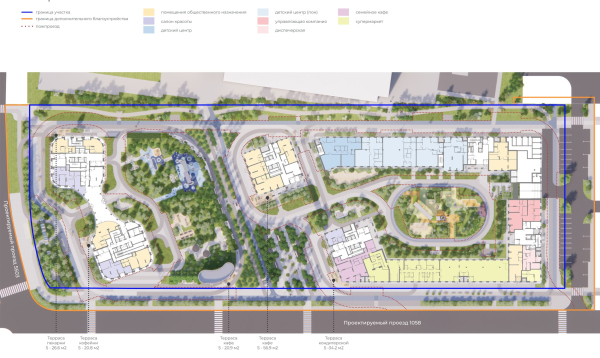 The master plan. Phase 4 of ALIA residential area. Houses completed before 2024Copyright: © APEX / ASTERUS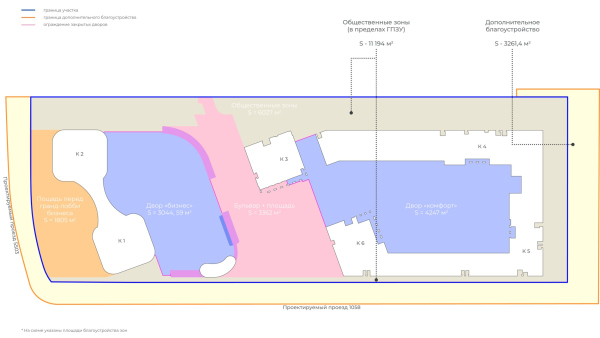 Functional diagram. Phase 4 of ALIA residential areaCopyright: © APEX / ASTERUSThe restaurant behind the glass barrier at the foot of the “big” towers. Phase 4 of ALIA residential area.Copyright: © APEX / ASTERUSThus, the buildings in the eastern part are sectional, in various shades of brick, with white, streamlined balconies providing a slight accent to the surfaces. This is a background approach – 70, not 30 percent, as described in the well-known book. 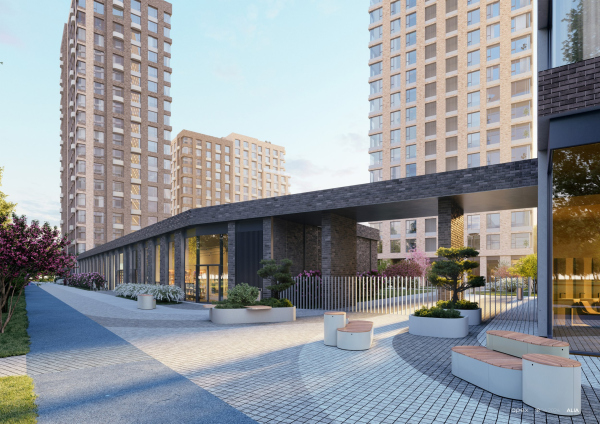 Phase 4 of ALIA residential area.Copyright: © APEX / ASTERUS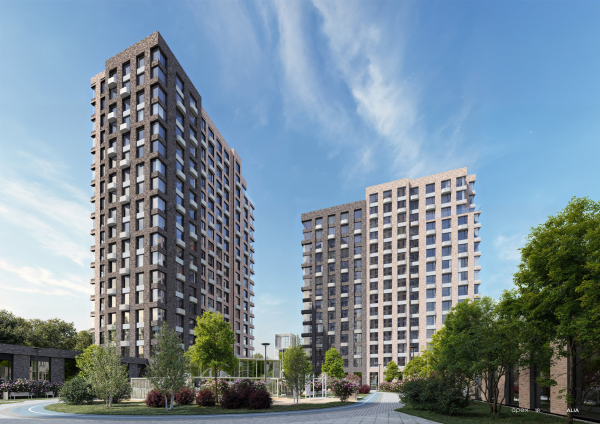 The eastern part. Phase 4 of ALIA residential areaCopyright: © APEX / ASTERUSIn the towers of the middle section, the brick becomes redder; here, asymmetric “insert” spots and terrace recesses appear. They are the propylaea of the eastern courtyard and also serve as a “step”, allowing the height to increase smoothly: one is 94 meters, and the other a classic 100 meters. 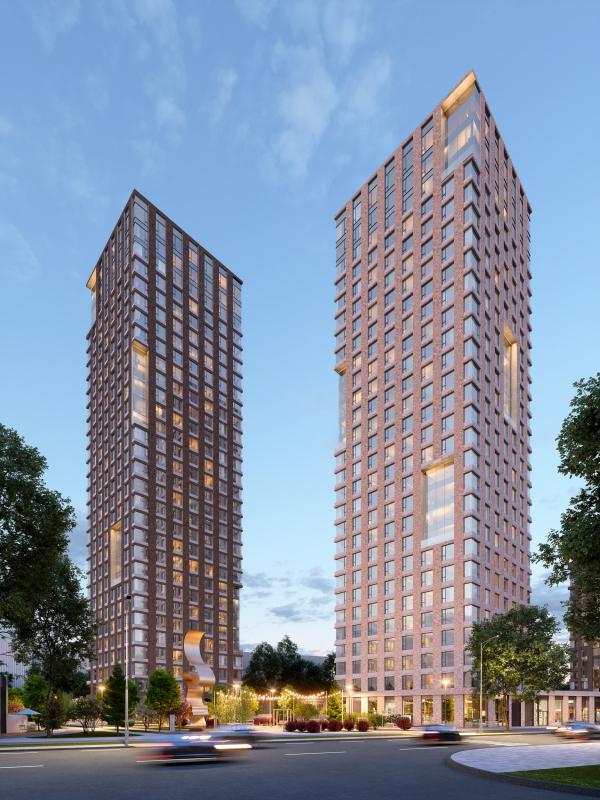 Phase 4 of ALIA residential area.Copyright: © APEX / ASTERUS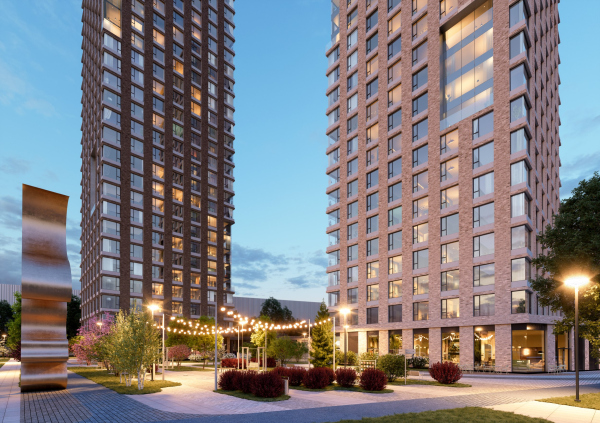 Phase 4 of ALIA residential areaCopyright: © APEX / ASTERUSThe cross-section clearly shows how the height progressively increases. 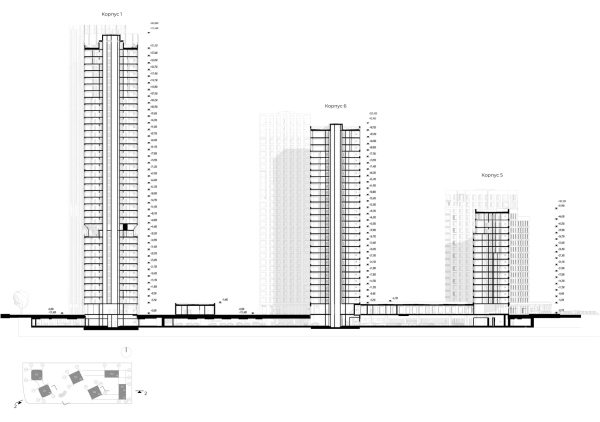 Section 2-2. Phase 4 of ALIA residential area.Copyright: © APEX / ASTERUS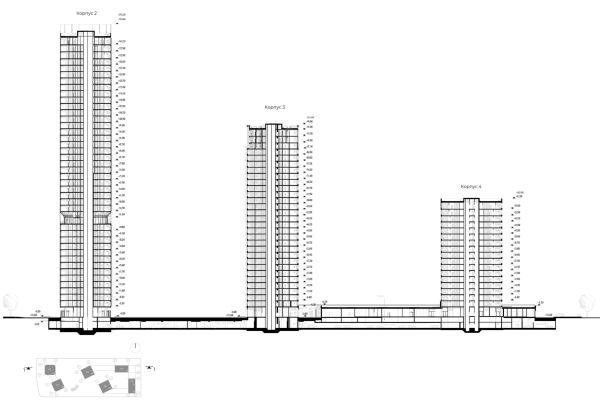 Section view 1-1. Phase 4 of ALIA residential areaCopyright: © APEX / ASTERUSAnd finally – the crescendo – glass-aluminum towers. The pairing of these glass-and-aluminum towers echoes the duo of brick buildings. However, urbanistically and figuratively, the towers more respond to the river’s water. The facades are dominated by glass and verticals. The prominently protruding pilasters, resembling both modernist ribs and Gothic buttresses, are gently concave in the streamline spirit. They are silver-metallic, with a golden-brass groove running along the central axis. At the base, the ribs are wider and protrude more, gradually tapering and receding as they rise, like some kind of metallic flower. 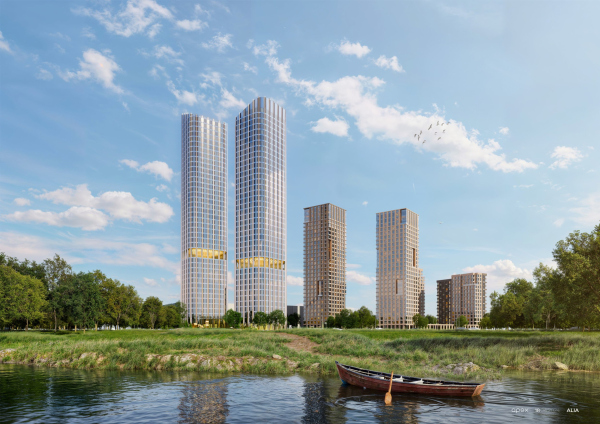 Phase 4 of ALIA residential area.Copyright: © APEX / ASTERUS Phase 4 of ALIA residential areaCopyright: © APEX / ASTERUSPhase 4 of ALIA residential area.Copyright: © APEX / ASTERUSAt the top, the silhouette of each tower noticeably slopes downward, giving the pair a resemblance to a Moscow Kremlin merlon, but much larger – and spatially distributed. This theme is understandably popular in Moscow: in the city’s new projects, such sloping forms are appearing more frequently. I think it’s safe to say that one of the first experiments in exploring the potential of a sloping silhouette was the Tourist House situated on Moscow’s Leninsky Prospekt. However, there was no analogy to a “swallowtail” there, as the slopes all faced the same direction – whereas, in our case, the form acquires additional subtle nuances. The mid-section propylaea towers get brick, while the “riverside” towers get the “merlon”. On the other hand, the towers might serve as beacons in the sweeping river view, as their height is no longer around a hundred meters but a whopping 144 meters. And their silhouette is not unambiguous – it will vary from different angles, merging and separating.  Phase 4 of ALIA residential area.Copyright: © APEX / ASTERUS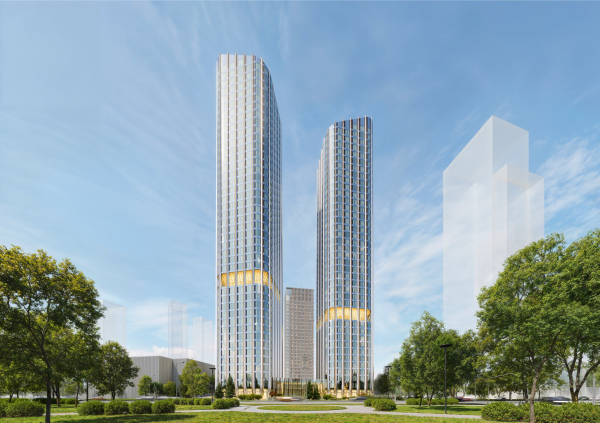 Phase 4 of ALIA residential areaCopyright: © APEX / ASTERUSHowever, the most interesting aspect of the glass-aluminum towers isn’t their silhouette, but the arrangement of large duplex apartments: on the 12th–16th and 15th–16th floors. It is their terraces that form the golden belt across both towers, the brightest accent of their design. Phase 4 of ALIA residential area.Copyright: © APEX / ASTERUSThe “waist” of the terraces is a fresh approach for Moscow, and it deserves dedicated examination. At the height of the 12th and 15th floors, a recess is formed along the contour of each tower. The pilasters remain uninterrupted, as they “hold the shape” both visually and structurally, forming the outer part of the towers’ load-bearing framework. However, behind them, there is a deep balcony; inside, there is a two-story glass wall, sloping at the top – if you look at the cross-section view, it unfolds like a flower.  Phase 4 of ALIA residential area.Copyright: © APEX / ASTERUS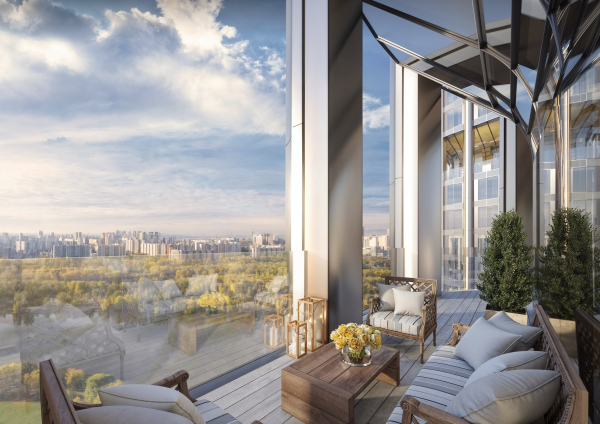 Phase 4 of ALIA residential areaCopyright: © APEX / ASTERUSIt’s clear that the golden hue will depend on the lighting inside the duplex apartments, alternating between light and shade. The interpretation of this theme won’t be too definitive – which is a good thing, as Moscow has seen a lot of experimentation with golden tones in recent years, making it the perfect time to delve into nuances, which is seemingly what we are witnessing here. The height of the living rooms in the duplex apartments is 6.6 meters, while the standard floor height is 3.3 meters, allowing the interiors to be divided into two full levels. Once, when discussing a building on Korobeynikov Lane, Grigory Revzin compared such inclusions to full-fledged urban villas embedded directly into the building – and in this case, the comparison is also fitting, except for the fact that here the “villas” are arranged in regular rows on their respective floors. 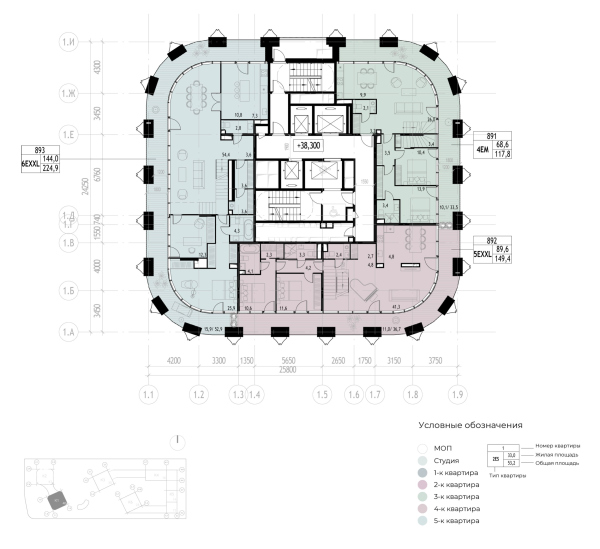 Plan of the 12 floor. Phase 4 of ALIA residential area.Copyright: © APEX / ASTERUS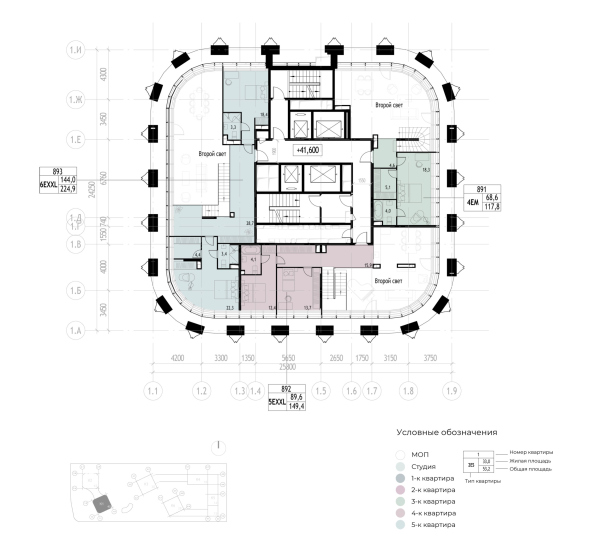 Plan of the 13 floor. Phase 4 of ALIA residential areaCopyright: © APEX / ASTERUSThe premium duplexes in the towers. Phase 4 of ALIA residential area.Copyright: © APEX / ASTERUSNevertheless, these belts are very likely to glow, especially at night. Phase 4 of ALIA residential area.Copyright: © APEX / ASTERUSContinuing the discussion on flexibility, it should be noted that the ribs of the towers curve at the base, further enhancing the resemblance to plants; a visual dialogue is created between the glowing lobby level and the “waist” of the terraces – the buildings grow like metallic “flowers”, but the biomorphic associations are very subtle, not overly emphasized, and don’t jar the eye, which should be recognized as a positive aspect. There is a sense of elastic growth, but the towers don’t pretend to be lotuses, or bamboo, or anything of the kind; they remain more aligned with high-tech rather than bio-mimicry. 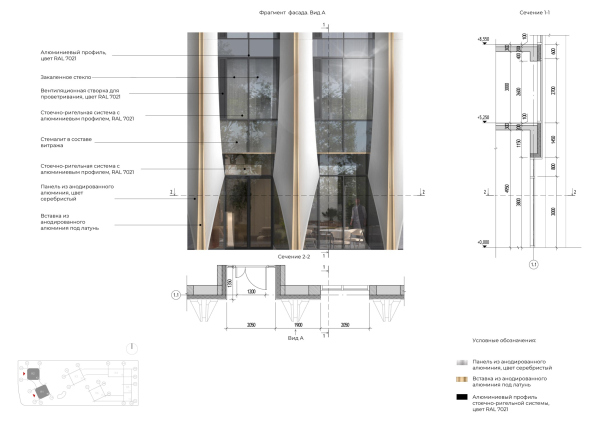 Facade fragment. Materials and structures. Phase 4 of ALIA residential areaCopyright: © APEX / ASTERUS Facade fragment. Materials and structures. Phase 4 of ALIA residential areaCopyright: © APEX / ASTERUS Facade fragment. Materials and structures. Phase 4 of ALIA residential areaCopyright: © APEX / ASTERUS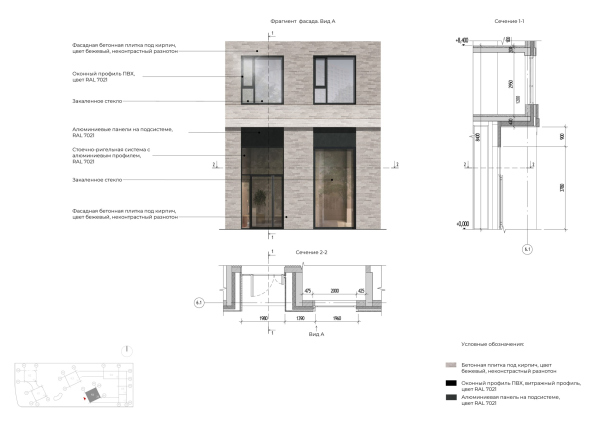 Facade fragment. Materials and structures. Phase 4 of ALIA residential areaCopyright: © APEX / ASTERUS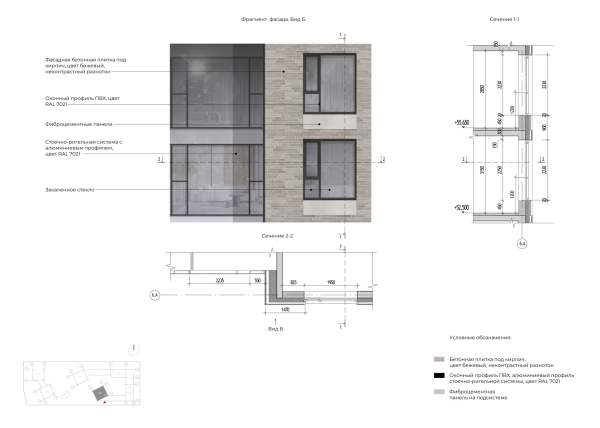 Facade fragment. Materials and structures. Phase 4 of ALIA residential areaCopyright: © APEX / ASTERUS Facade fragment. Materials and structures. Phase 4 of ALIA residential areaCopyright: © APEX / ASTERUS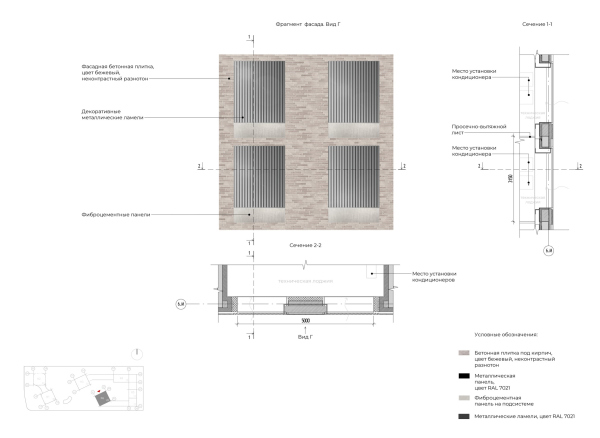 Facade fragment. Materials and structures. Phase 4 of ALIA residential areaCopyright: © APEX / ASTERUSThus, the northwest “beam” of the new phase of construction sequentially and hierarchically arranges different types of development: changing in class and imagery, and evolving as it progresses towards the river. But it’s not just about that. Its structure also responds to the main focal point of the entire district – Rostec-City, designed by SOM. As we recall, it was also conceived as a sum of modern urban representations: at the center, there is a glass tower, vertically folded and gleaming – surrounded by brick blocks with galleries. The city of the modern skyscraper is encircled by the city of “New Urbanism”: a multifaceted entity composed of easily recognizable groups. In some ways, the business park in Tushino can be understood as an “icon” of the 21st-century city – a concise and comprehensive statement on contemporary preferences. The new phase of the residential area in question interprets this idea by “stepping away” from it: closer to the business park, there is a city block, and further away, there is a glass tower. It stretches, dissolves, and grows in height – but it tangibly responds. Thus, the concept is clear, and the rhyme is evident. |
|
